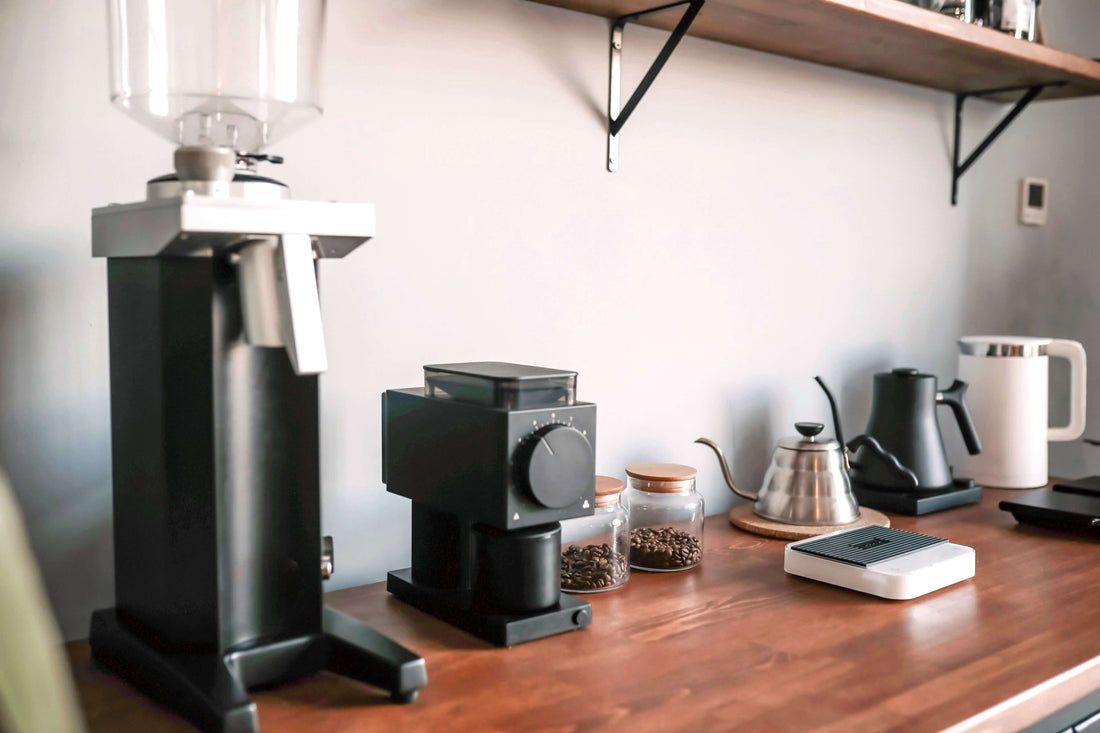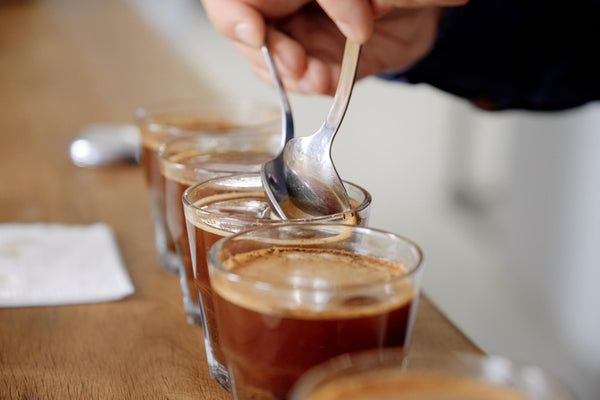
Coffee's Strength and Extraction: Scientific Part
tai attitude4 min read
When it comes to understanding brewed coffee, the best way is to drink it with wisdom. All the same, perceiving coffee through sensory means is not the only option we have.
Other than accessing the brewed coffee with our senses, measuring the strength and extraction of it is another way to identify the brew.
For thoroughness and ease of understanding, this topic content gets published in two parts: the sensory part and the scientific part. Let's begin.
What is Strength
Strength in the context of coffee refers to how strong or weak (concentrated or watery) the coffee beverage is.
The strength of a coffee beverage is measured as the total dissolved solids (TDS%).
As a general guideline, the higher the percentage, the stronger the coffee. Vice versa.
For example, a TDS of 2% in filter coffee is described as strong, while a TDS of 0.7% in filter coffee is described as weak.
Why? Because for filter coffee that has a TDS of 2%, 98% of the cup is water. Thereby, a filter coffee with a TDS of 0.7% is much weaker in comparison, as it has more water at 99.3%.
The strength at which humans find most coffee enjoyable is in the TDS % range that (neither too concentrated nor watery) falls between 1.2–1.5% for filter coffee and 7–12% for espresso.
Espresso has roughly ten times the strength of filter coffee.
Since total dissolved solids refer to how much mouthfeel and intensity there is, it does determine our flavour perception in the cup.
How to measure or calculate TDS %
TDS % of the coffee can be obtained by using a tool called a TDS Refractometer.
 Simply place a few drops of syringe-filtered coffee or espresso on the lens of the refractometer to instantly get a TDS % reading.
Simply place a few drops of syringe-filtered coffee or espresso on the lens of the refractometer to instantly get a TDS % reading.
Alternatively, without a TDS refractometer, we can calculate the TDS % of our coffee beverage as follows:
 Used ground coffee is the weight of the ground coffee after brewing and must be 100% free of moisture.
Used ground coffee is the weight of the ground coffee after brewing and must be 100% free of moisture.
Here are some of the general uses of TDS %:
- As a data source for dialling in coffee.
- To learn how much total dissolved solids are in the coffee beverage.
- For measuring the consistency of coffee brewing.
- To calculate the extraction yield (EY %) of the brewing process.
What is Extraction
Extraction in the context of coffee refers to how much has been extracted from ground coffee during the coffee brewing process.
The amount extracted from ground coffee is measured as the extraction yield (EY%).
For coffee brewing in general, up to 35% of the compounds from ground coffee can be extracted by water, while the other 65% of compounds in ground coffee are insoluble.
As a general guideline, the higher the percentage, the more compounds from the ground coffee have been extracted. Vice versa.
For example, an extraction yield of 17% is described as under-extracted (sour, salty, oily), while 23% is described as over-extracted (bitter, roasty, ashy).
Why? When a cup of coffee has an EY of 17%, this also means 83% (65% insoluble + 18% soluble) of the remaining compounds in the now-used ground coffee are thrown away. We extracted too little.
When a cup of coffee has an EY of 23%, 77% (65% insoluble + 12% soluble) of the remaining compounds in the now-used ground coffee are thrown away. We extracted too much.
Ideally, the extraction yield % range where most humans find most coffee to be enjoyable in flavour (neither too sour nor bitter) falls between 18–22%; this range is the same for both filter coffee and espresso.
Since extraction yield refers to how much has been extracted from ground coffee during the coffee brewing process, it determines our flavour perception in the cup.
How to calculate EY %
EY % of the coffee can be calculated by substituting the strength TDS % reading we get from the TDS refractometer into the equation below.

Alternatively, without a TDS refractometer, we can calculate the EY % of coffee as follows:
 How these equations in the article are derived is explained in this PDF.
How these equations in the article are derived is explained in this PDF.
As we can see, EY % can be calculated independent of beverage weight, which proves EY % is a calculation of how much ground coffee has given up (dissolved) instead of how much water has gained.
Here are some of the general uses of EY %:
- As a data source for dialling in coffee.
- To learn how much has been extracted from the ground coffee.
- For sensory calibration and training.
- To calculate the strength (TDS %) of the coffee beverage.
In summary
For brewed coffee's quality assessment, when we use the measurement of strength and extraction as a tool in conjunction with sensory, it can be much more accurate than relying on sensory alone.
Not to be confused with the percentages, TDS % is the measurement of strength, while EY % is the measurement of extraction.
In the world of coffee, we are all chasing marginal improvement, as a 1% difference in coffee is a lot; it makes a drastic sensory difference in the cup.
Ideally, we would want to achieve a balance between strength (filter coffee 1.2–1.5%, espresso 7–12%) and extraction (18–22%) in coffee brewing, as this is the general enjoyable range for most.



